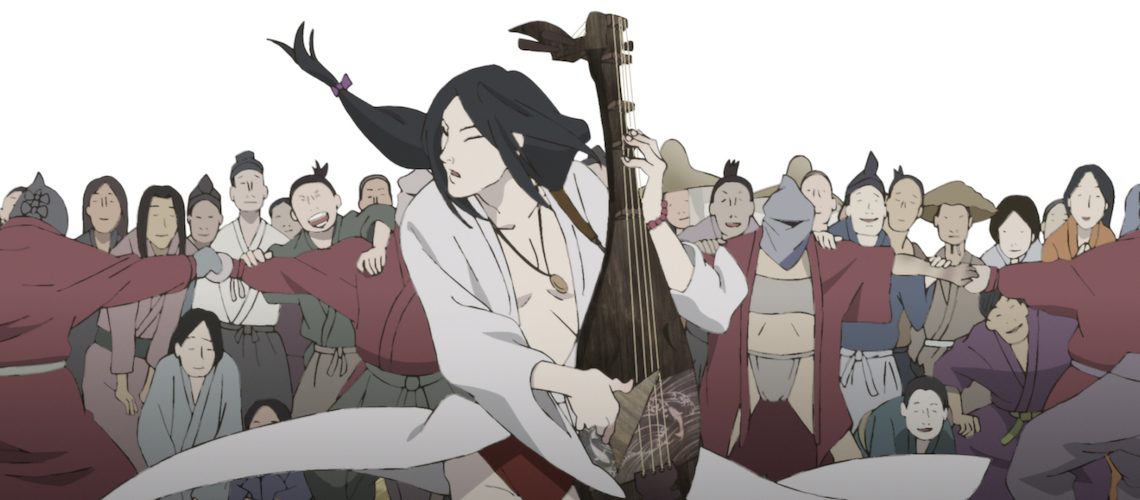
Movie Review: Inu-Oh
August 24, 2022Set in a fantastical version of 14th-century Japan, Inu-Oh is a punk-rock meditation on the power of art and the importance of stories.
The film centres around the artistic duo of Inu-Oh, an energetic Noh dancer with an oddly-proportioned build, and Tomona, a blind bard and master of the biwa (a traditional Japanese stringed instrument). Together, the two develop an infectious style of musical storytelling that breathes life into the pop culture of the time, and quickly take Kyoto by storm.
The bulk of the runtime is taken up by grand performances portrayed as rock concerts. Dressing up in elaborate costumes that emphasize his unusual appearance, Inu-Oh will inhabit the role of a fallen hero, acting out their story on huge sets to a raucous crowd. At his side are Tomona and his backing band, supporting the performance with hard-hitting groove metal.
The performances themselves are mesmerizing. Director Masaaki Yuasa creates powerful scenes which are beautifully animated by Science SARU, and barely need the narration Tomona and Inu-Oh provide. As stories are recounted by the protagonists, it’s easier to get lost in the hypnotic visuals than the carefully manicured lyrics. One tale of a whale hunt is staged using an entire bridge with enormous shadows; another – recounting a military victory – sees hundreds of meticulously detailed straw hands shoot out of the ground during its finale. While the details of the stories are there, the feelings brought on by the duo’s awe-inspiring performance are paramount.
These concerts are set in stark contrast to the more traditional biwa and Noh performances, which in this film are portrayed as little more than chants. With only one or two exceptions, the chanters themselves convey no personality. Inu-Oh and Tomona, however, are fiercely self-expressive, taking on increasingly bold appearances as their concerts become more intricate. They dress flashily, let their hair grow out, and become increasingly androgynous, in a clear nod to the punk-rock and new-wave movements of the 70s and 80s. It’s a wildly effective use of anachronism to show how subversive these performers were.
A major theme of Inu-Oh is the importance and abundance of stories. The plays performed by Tomona and Inu-Oh are dramatizations of the lives of people who were nearly forgotten. They’re “new” stories, but only insofar as they differ from the handful approved by the Noh and biwa troupes of the time. Ironically, the main characters of Inu-Oh are based on people who likely existed, but the details of whose lives have been lost to time.
In a way, the story of Inu–Oh fits right alongside those featured in the film. An epic telling of the life of someone long-forgotten, by a talented team of storytellers with a unique vision.

